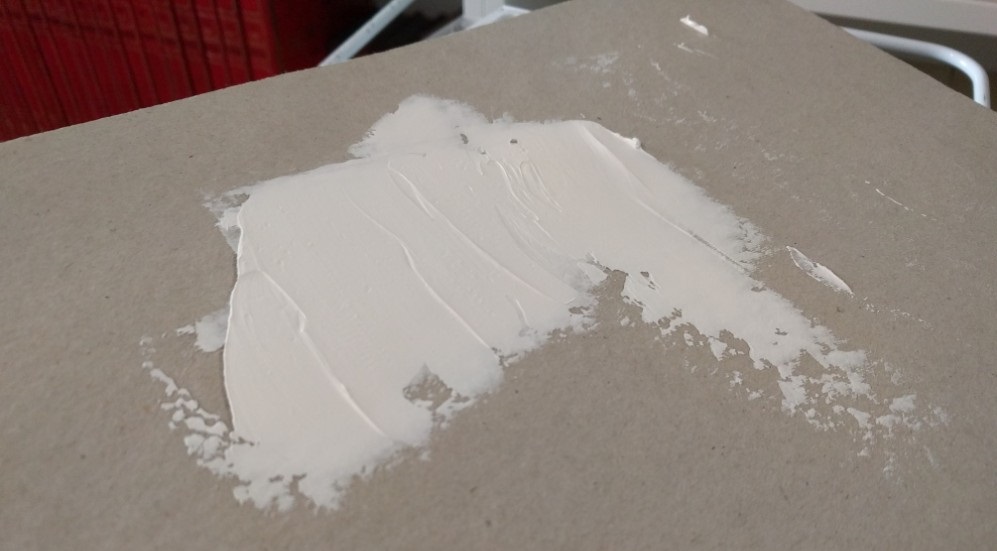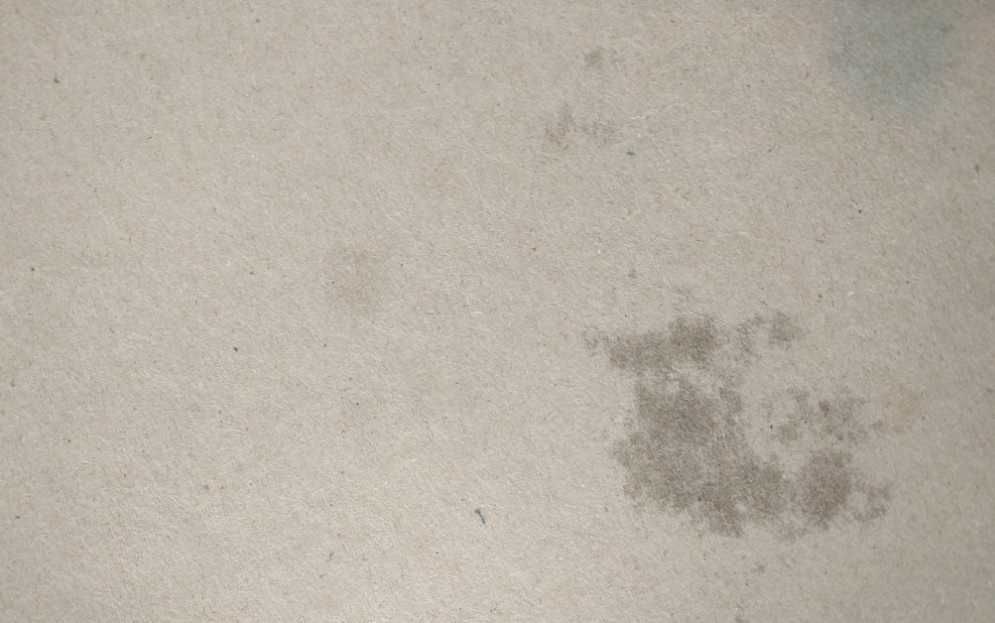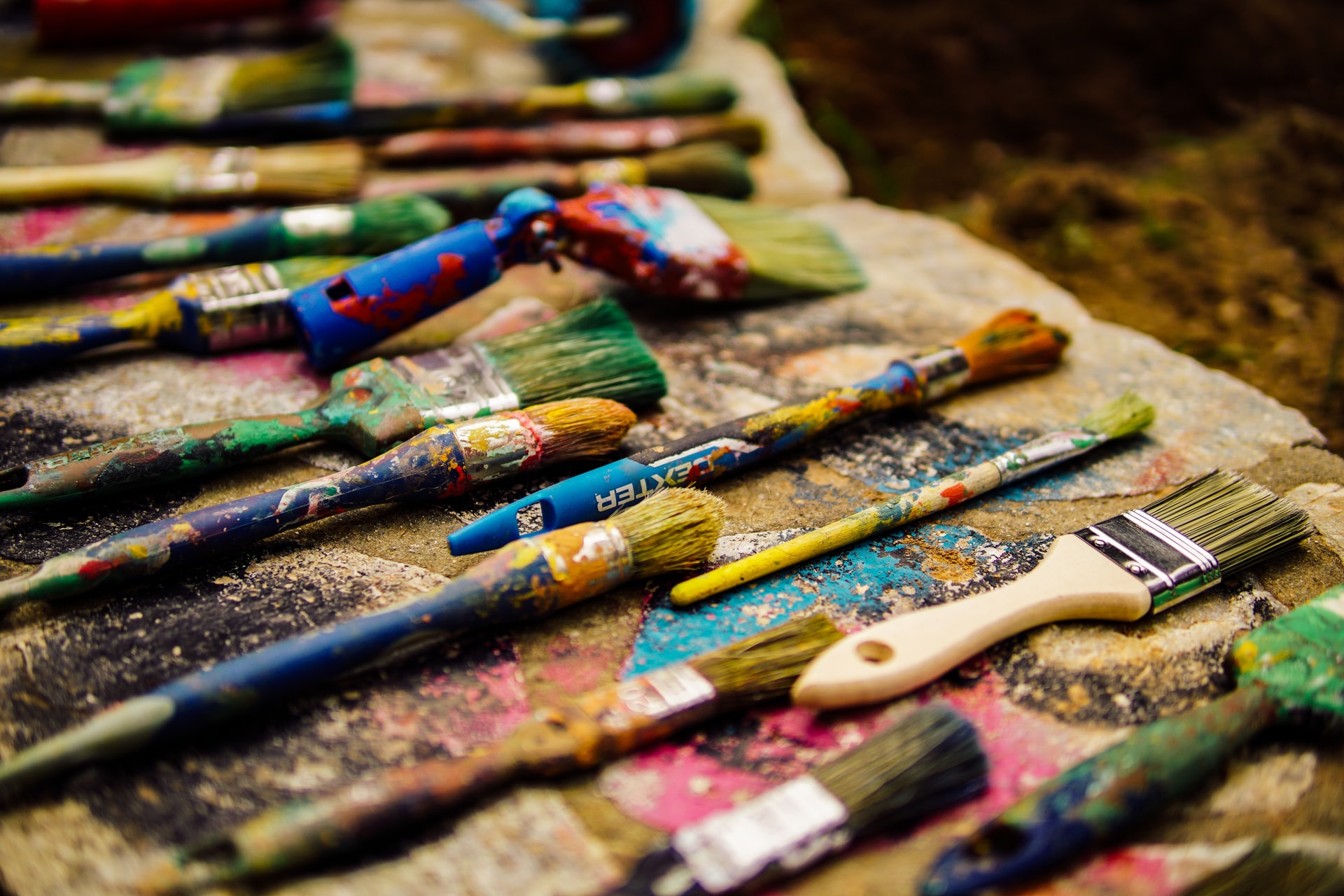The most striking part of many Bob Ross paintings is his mountains. Their big peaks with untouched fields of snow and harsh cliffs are equally fascinating as intriguing, especially for beginner painters. We’ve compiled some tips and tricks to make painting them easier for you. Read on to find out how to paint mountains like Bob Ross does.

Contents
Painting Mountains Like Bob Ross – The Essentials
The most fascinating thing about watching Bob Ross paint is how he creates all kinds of things without any effort at all. He paints trees and bushes by lightly smushing his brush into the canvas. Their reflections are a little bit of paint dragged straight down.
And to paint detailed mountain peaks and ridges he just drags his painting knife across the canvas. Looks super easy!
Many beginners however struggle with these things. Their mountains look like paint slapped on the canvas, their bushes and trees are brown splotches instead of nice green structures. Did it happen to you too? Certainly happened to me!
But all these techniques have one thing in common: Bob makes his tools and colors work for him.
Bob developed many of his techniques during his time at a military base in Alaska. It is no wonder that mountains are such a big part of his paintings!
The Right Tool For The Right Job
By using the right tools and paints and following a few simple tricks you too can push your mountains to the next level!
We recommend getting Bob Ross branded paints, as they were specially developed for the Bob Ross wet-on-wet technique. (Read more about tools, paints, and alternative products here.)
If you can’t get the name-brand stuff we’ll show you a simple trick to upgrade even the cheapest oil paints in a quick and easy way to make you paint better mountains!
Mountain Painting Tricks And Tips
One of the things most beginners find it hard to do when first painting along with Bob Ross are mountains. They struggle with getting the paint to ‘break’ like Bob does, and while the old master creates the illusion of terrain with a swift movement of the hand and a small roll of paint on his knife, they are stuck with the same role on the painting and with almost no breakage and no terrain, just like pictured below:

One solution to this problem is to just slap a lot more paint on the canvas and calling it a day, just like I did in my first painting:

Trick #1: Every Mountain Needs A Base – Scrub It Real Good
The secret of Bob’s technique for painting mountains is to let your painting supplies do all the work for you. All you have to do is drag a small roll of paint across the canvas. The canvas will grab just as much paint as needed and you’ll have some great looking mountains and the illusion of ridges and terrain.
Here’s our first tip: after laying out your mountain’s shape go back and scrape out all excess paint from the silhouette. You really want to get in there and get the canvas pretty dry and grippy. After all, we want it to be able to pull some oil paint on itself, right?
To keep the dark base really push the color into your canvas while scraping it off. If you want you can even go in and wipe it down with a paper towel to make it extra grippy. After this step you can blend the base with your two inch brush to create an even layer of paint. Just keep it dry!
Trick #2: Upgrade Your Titanium White To Paint Better Snow
A lot of people start painting with rather cheap oil paints. When their mountains don’t come out like they want them the problem is not their technique but the paint itself!
About Oil Paint
Oil paint in its basic form consists of particles of pigment suspended in a drying oil and the Titanium White that Bob Ross uses is a rather firm and dry paint, meaning that it does not contain as much oil as other paints. The original Bob Ross Titanium White is made for the wet-on-wet-technique while other oil paints, especially cheaper ones, contain way more oil than the Bob Ross variant. But there is a way to upgrade even the cheapest oil paints you can find to get better results!
To show you this trick I went out and got the cheapest paints I could find. A 12x12ml (or 12×0.4oz) set of them cost me around 4$, so one tube is a little more than 30 cents.

And just as one would expect the paints are not the best quality and just as firm as the baby owl that Bob had on his show one time.
An Easy Way To Dry Up Your Oil Paint
As mentioned above oil paints are made from pigment and oil, so to get our paint to become firmer we need to find a way to decrease the amount of liquid oil in our paint. While there are stories about the old masters of oil painting leaving their paints out to dry over weeks and waiting for the day the paint had the perfect ratio of oil to pigments we don’t have time for this. So here comes the trick:
All you have to do is take some carton (I like to use the back of notepads as they seem rather absorbent) and spread your paint on it.

After around thirty minutes you should start seeing spots and stains of oil on the backside. This is the carton sucking the oil out of your paint.

Now it’s time to see if your paint is firm enough. Just scrape it off with your palette knife, put it on the palette, and check the firmness.
If it still very runny you can just put it back on the carton and wait for another fifteen minutes, but be sure to not leave it there too long.
After around one hour the paint simply becomes too dry and won’t leave your knife when applying it on the canvas. If this is the case simply add a little bit of fresh white and mix it thoroughly.
This is what happened to me, and since I didn’t have any white left I just scraped the paint from the first mountain I did and mixed it, which is why the snow on the second one has a little darker color.
Checking The Results
So I put down some rough mountain outlines and applied some paint. Below you can see the results using Titanium White fresh out of the tube and using paint that was dried with this trick.


While the breakage is not as good as Bob’s you can clearly see the effect of ‘upgrading’ the paint by drying it. So while you will get the best results using the original Bob Ross products this technique might push your paintings to the next level.
I hope this trick helps you with your mountains.
As always if you have any comments feel free to reach out on Twitter.
